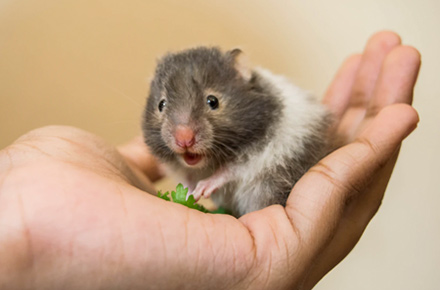About teaching with animals

In Victoria, teachers wanting to use animals for science education must have approval from an Animal Ethics Committee (AEC).
The Victorian Schools Animal Ethics Committee (VSAEC) provides an animal ethics service for all Victorian government, Catholic, and independent schools seeking permission to use animals in learning activities in schools.
For more information on the VSAEC and their services please contact animalethics@education.vic.gov.au or visit the Victorian Schools Animal Ethics Committee website.
Use of animals — in a teaching activity
This is a brief outline of what you need to run an animal based activity in your classroom:
- Your school must have a Scientific Procedure Premises Licence (SPPL) or be covered under the Department of Education and Training licence.
- You must have an activity that has been approved by an AEC.
- You must have suitable housing for the animals.
- You must have a good knowledge of the husbandry and care requirements of the animals you will be keeping.
- You must have contingency plans for care of animals over weekends and holidays and in the event of an equipment or power failure.
Planning teaching activities
Teachers intending to use animals for educational purposes have a legal and ethical obligation for the wellbeing of the animals to be used in activities.
Step 1:
- What is the educational objective?
- What are you trying to achieve?
- What are the benefits for the students?
Step 2:
- How do I best achieve my education objective?
- Can I achieve my objectives without using animals?
- Do a thorough search of the educational resource literature to determine what activities have been
completed with animals and how successful they were at achieving their aims and objectives. - Which animal species would be optimal for achieving your educational objective?
- How have different programs managed the species?
- What were the activities undertaken with the species?
- Is there a VSAEC approved activity available?
Step 3: Plan your activity
When planning your activity, you will need to answer the following questions:
- Will the natural behaviours of my animal impact on my ability to use this animal to complete the activity?
If yes, how am I planning to deal with this?
- Does my animal species have specific housing and husbandry requirements; and if yes, how might these requirements impact on my ability to complete the activity?
- Will the activity stress the animals and, if yes, how?
- Will any stress experienced by the animals impact on the educational outcomes of the activity?
- At what point will I remove an animal from the activity when they begin to show signs of stress or distress?
- How many animals do I need?
Some further questions you need to answer:
Housing:
- Will the animals cope with a classroom situation?
- What housing is available? Is it suitable? Does it need modification?
- How are food and water provided?
Husbandry:
- What are the feed, water and shelter requirements of my animals?
- Who will be responsible for the day to day management of my animals? Will they require training in the behaviour, management and handling of the species?
- Who will be looking after the animals on the weekends and school holidays?
- What are the contingency plans for the management of the animal (loss of power, loss of water, fire, staff illness)?
Equipment:
- Is the equipment you are planning to use appropriate for the species, age and sex of the animal you have chosen?
- Do all the staff and students involved in the activity understand how to use and maintain the equipment?
- What are the contingency plans for failures in equipment?